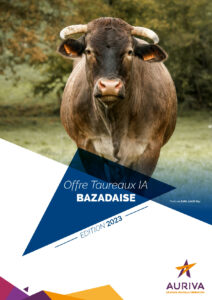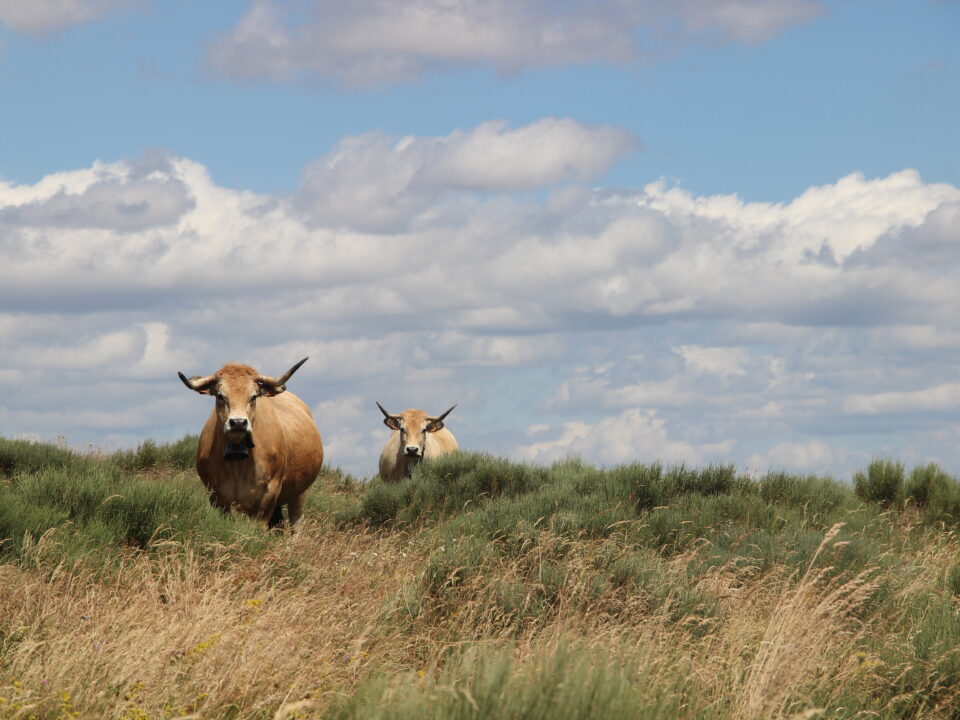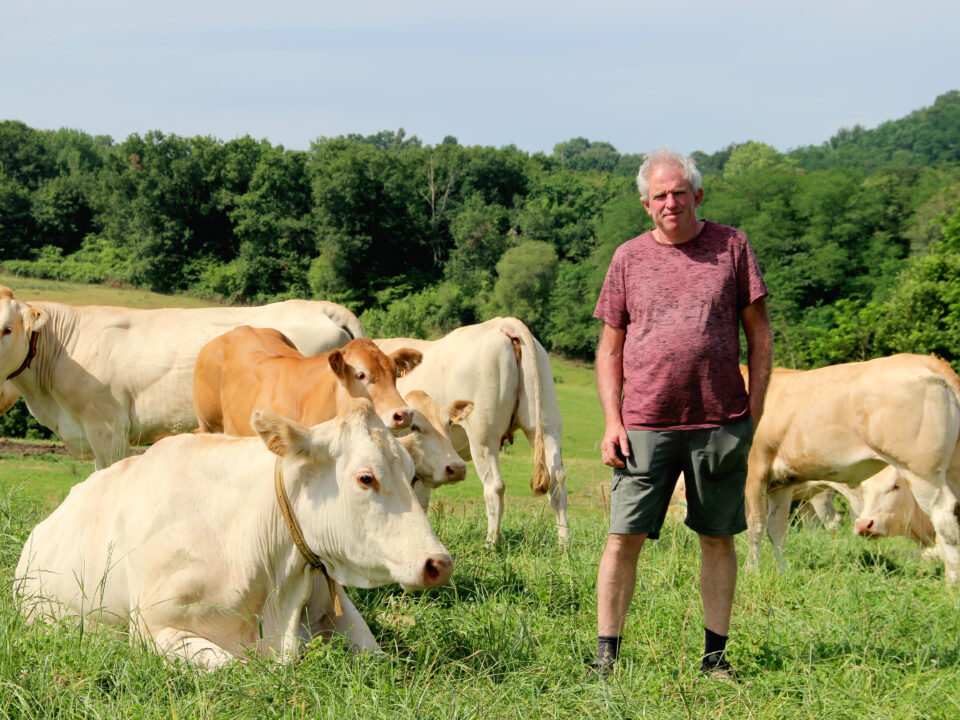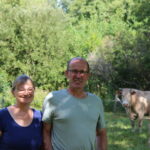
AI and controlled breeding: the GAEC des Patureaux, a factory of champions!
19 March 2024
Meeting with GAEC LES ALPAGISTES in Megève (74): 90% Abondance and 10% Tarine mixed herd
12 June 2024Detection of a genetic anomaly in the Bazadaise breed
Following the declaration by breeders and their vets of 4 animals born malformed on two farms to the ONAB (Observatoire national des anomalies génétiques), a genetic anomaly has been identified in the Bazadaise breed.
This anomaly is called BullDog because of the malformations observed in the calves. They generally have a head with an atrophied snout and a pronounced prognathism (forward lower jaw). These calves are not viable.
Genetic determinism is recessive. In other words, animals must inherit the mutated allele from both parents in order to express symptoms. In other words, animals can be healthy carriers and express no problems. On the other hand, if two healthy carriers are mated, 1 in 4 offspring born will be affected by the disease.
Parent 1 : Non-bearing +/+ } 50% of non-bearing +/+ products
Parent 2 : Healthy carrier +/BDG } 50% of healthy carriers +/BDG
Parent 1 : Healthy carrier +/BDG } 25% of non-bearing products +/+
50% of healthy carrier products +/BDG
Parent 2 : Healthy carrier +/BDG } 25% of products with BDG/BDG disease
The frequency of the anomaly in the population seems low, given the few cases reported to date. Nevertheless, it needs to be managed on a racial scale to prevent its spread and the associated economic losses.
The first precaution is to avoid risky matings between healthy carrier animals. In fact, healthy carriers have no symptoms and therefore pose no problem in the herd. On the other hand, they can produce malformed animals if bred to each other at a frequency of 1 in 4.
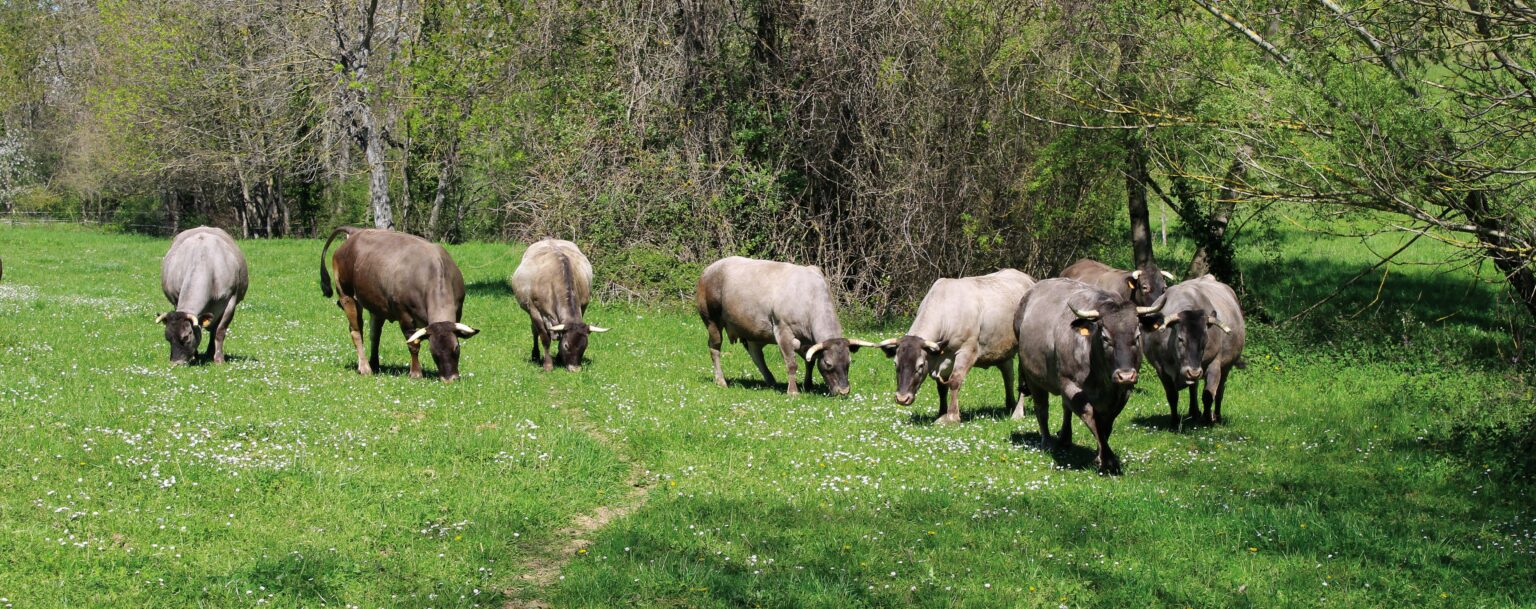
As part of the experimental work, a presumptive status was obtained for animals already genotyped: insemination bulls and males currently being evaluated at the breeding station.
Now that the mutation has been identified, mutation testing with the highest degree of reliability can be envisaged. The latter should be available via genotyping in 2024. At the same time, Excellence Bazadaise and AURIVA have initiated work to offer breeders a genotyping service that will enable them to test their animals for the BullDog anomaly as soon as this mutation-based test becomes available.
In the current state of knowledge :
- Young males currently being tested at the breeding station are presumed to be carrier-free.
- Some genotyped bulls have been identified as suspected carriers of the anomaly. These include insemination bulls GARDON, IMPREVU and RADON. It is therefore strongly advised to avoid mating these bulls with descendants of any of the others, to avoid risky genetic combinations.
Once we’re able to test the animals, we’ll be able to make more precise mating recommendations. In fact, for example, only half of IMPREVU daughters bred on non-carrier cows are healthy carriers. The other half is a non-carrier and will never transmit the gene, since it does not carry it.
It’s important to manage the anomaly to contain it within the racial population and gradually make it disappear. Nevertheless, it would be excessive and detrimental to racial variability to separate healthy carrier animals from herds too quickly. Mated with a non-carrier animal, they will produce calves that do not express the disease, with a 1 in 2 chance of not inheriting the gene in each generation.

Ludovic IZARD
Head of Meat Genetics Division
If you have any questions, please do not hesitate to contact Ludovic IZARD at the following address:
ludovic.izard@auriva-elevage.com or 06.03.08.81.39

